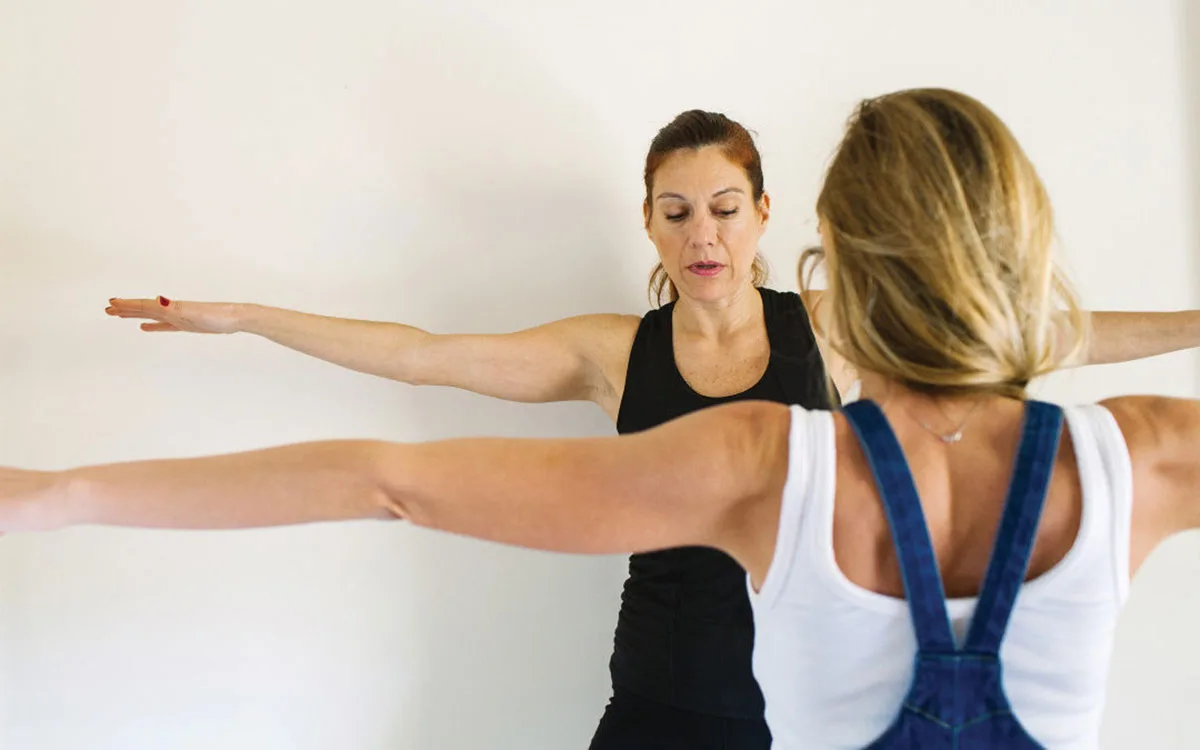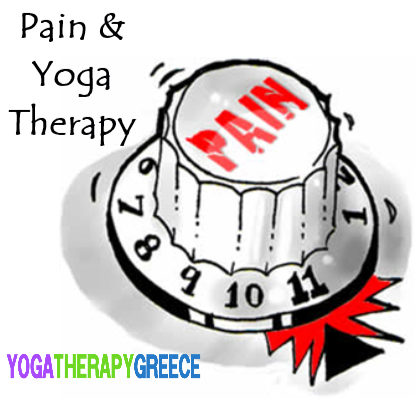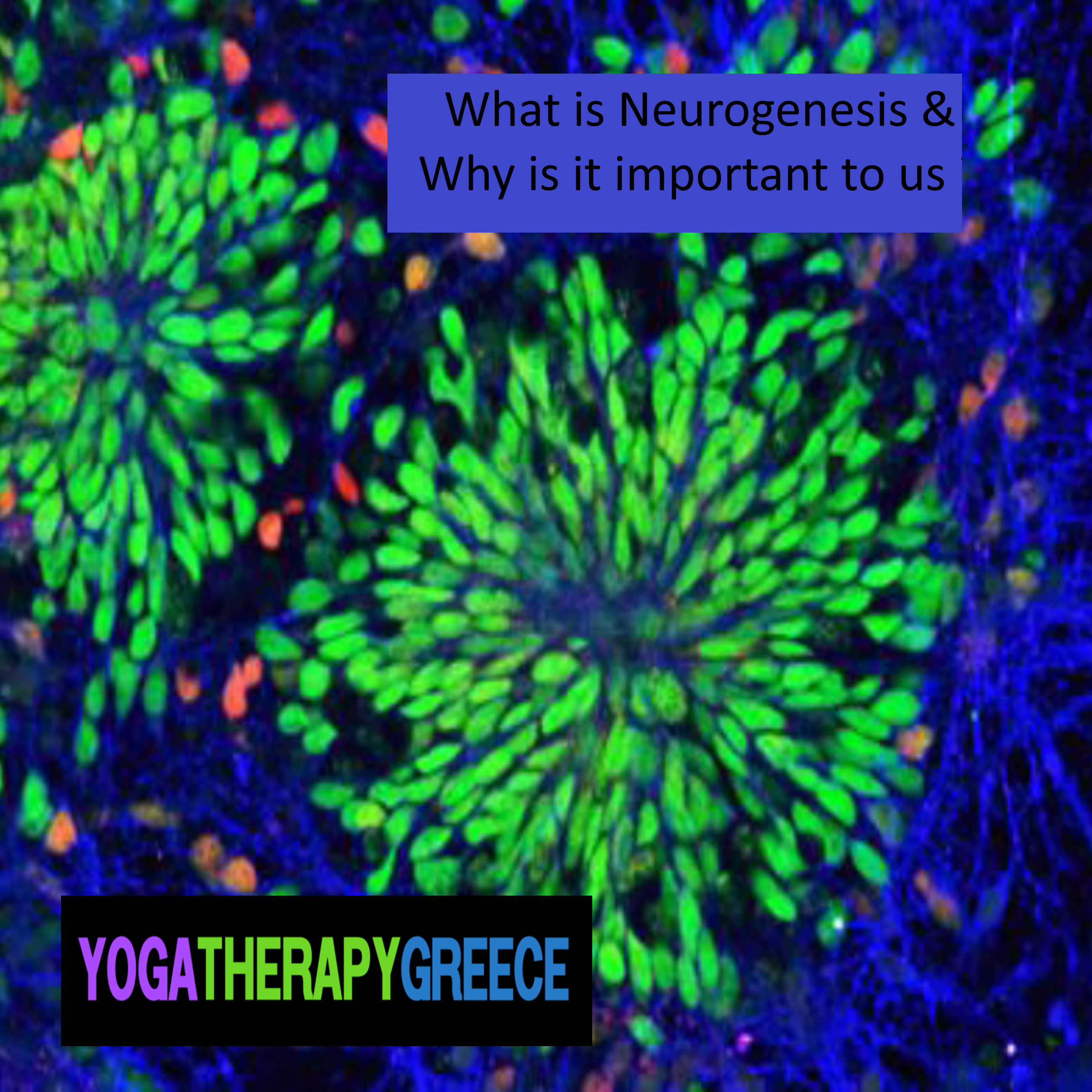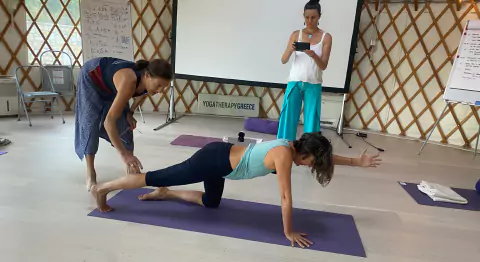Yoga Therapy for Insomnia
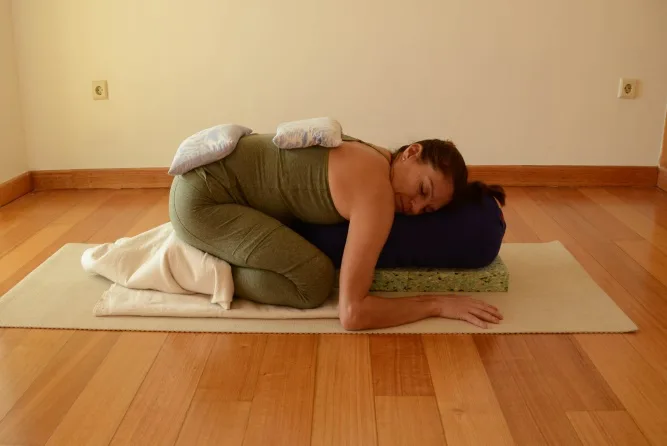
Based on our experience working with numerous people facing sleep issues, we are pleased to share some information and yoga tools that you might find helpful. Of course, every person is unique, and this is we know very well in yoga therapy, where based on the individual’s needs, energy level, body, breathing pattern, character, lifestyle and beliefs we develop a personalized graded holistic practice.
Insomnia is a huge issue, depleting people physically and psychologically.
There may be many reasons for insomnia such as changes, negative thoughts, anxiety for the future, an overstimulated mind, body tension, fear to sleep due to memories of old traumas, bad habits such as overconsumption of stimuli, reading on the computer until late, being dehydrated, even a bad bed.
There are also many types of insomnia. Not being able to sleep due overthinking, not sleeping well and not feeling rested, sleeping easily (mostly when they are exhausted) but waking up in the middle of the night thinking of a solution to personal or professional issues, waking up for going to the toilet and not being able to sleep again, sleeping many hours but not feeling rested, etc.
In yoga therapy for insomnia, like in most conditions, we try to regulate the nervous system, activate the parasympathetic branch of it, since the people may be stuck in flight or fight mode with a hyperactivated sympathetic nervous system due to their lifestyle or life challenges.
To balance the nervous system, we use the breath, enhancing breath awareness and belly breathing (most of the time) particularly elongating the exhalation, starting with simple pursed lips exhalation and moving in alternating nostrils breathing practices or alternating nostrils exhalation.
We also explore restoratives that enhance relaxation, either at the end of the practice or even at the beginning, as soon as they want to switch off from their job or other challenges.
The asanas need to release tension from the body, focusing mostly in stretching the parts that may accumulate tension such as neck, shoulders, jaw, lower back and hamstrings.
Simple recorded and ideally personalized guided relaxation may be very beneficial and should focus on connecting and following the breath, on feeling the body heavy, feeling grounded, safe, peaceful and at ease. Through guided relaxation, yoga nidra and meditation in restorative postures not only do we foster the relaxation but also, we enhance interoception (internal sense of self) in order to respond appropriately to tiredness and sleepiness cues, when they arise and not to ignore them.
- In the morning we prefer a brahmana practicethat enhances wakefulness, energizing the person by mobilization and repetitions prioritizing lifting the arms and opening the chest.
Inhale with sitkari/shitali, inhale and retention ~ Chest openers ~ Back bends ~ Side bends/Lateral flexion ~ Standing postures ~ Flow combinations ~ Engaging larger muscle groups (that need more oxygen and deeper inhalation).
So, a morning practice can be a short brahmana practice to wake up the body or if the person is exhausted, can be a restorative with a short yoga nidra or a brahmana pranayama such as sitali, 2 steps IN, inhaling by one exhaling by 2 nostrils.
- If during the day, the individuals feel tired, sleepy, they can try either a restorative to charge their batteries without boosting/further dysregulating the nervous system by coffee consumption or just by a brahmana pranayama such as the sitali, alternating nostril IN, surya bedhana (inhaling through the R exhaling through the L).
If the individual has more energy, small yoga breaks during the day keeping inhalation equal to exhalation can balance the energy and induce tiredness.
- In the evening ideally as soon as they come back home and finish their work, they should try their evening laghana practice promoting letting go and relaxation, incorporating either a yoga nidra/meditation or long pranayama.
- The laghana practice could have mostly forward bends and twists that enhance the exhalation, restoratives such as viparita karani, pranayamas such as nadi sodhana, chadra bedhana, counting the breath, repeating mantra, yoga nidra, meditation or prayer and above all belly breathing.
We prefer staying in asanas such as the cat, supta badhakonasana, balasana, apanasana that release/ stretch tension from the body and may induce sleepiness, enhancing exhalation and safety/letting go cues.
- Bedtime rituals may include the use of oils on the body.
If they wake up in the middle of the night, without fighting it, they could focus on the breath, and practice the circular breathing like a continuous cycle, inhaling through the left exhaling through the right, and explore letting go any tension or thoughts and feeling the body heavy (something experienced in meditation, yoga nidra, do a restorative or even something that they would have the urge to do or move to release any tension, or even do a restorative.
If they still can’t sleep they should try to accept and embrace the sleeplessness doing something productive or even start a short laghana pranayama.
They should be highly hydrated.
Supplements such as magnesium, hot drinks with valeriana or chamomile and consumption of carbohydrates may be quite helpful.
https://yogatherapygreece.com/ for details of IAYT Accredited 800 hours Yoga Therapy Training, personal and group yoga therapy sessions
#yogatherapygreeceforinsomnia #yogatherapyforinsomnia #yogaforinsomnia #iayt #yogatherapist #certifiedyogatherapist #yogatherapy #EviDimitriadouyogtherapist #yogatherapyinGreece
